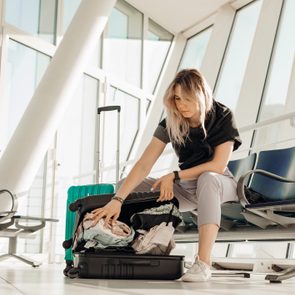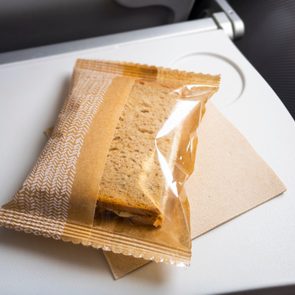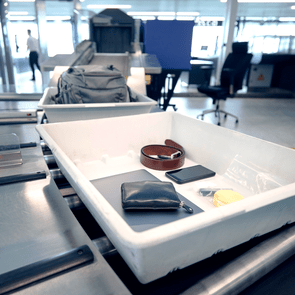Face Scanning Could Be Coming to All Major U.S Airports: Here’s What to Know
Updated: Mar. 12, 2024

The TSA has been using facial recognition software at 16 airports—here's what you need to know about how it works and if you need to do it.
It’s not new for the Transportation Security Administration (TSA) to use biometric technology—American airports have experimented with it since 9/11 —but what is new is the pilot program that’s been quietly testing at 16 airports that uses facial recognition software to verify your ID.
The motivation behind this pilot is to modernize the screening experience for passengers. This verification is done at a kiosk, eliminating person-to-person contact and perhaps quickening the process. A quicker process is good news for fans of TSA Pre-Check, making this step of the travel experience more convenient than ever.
“Biometric technology has the potential to enhance security effectiveness, improve operational efficiency, and yield a more streamlined passenger experience at the TSA checkpoint,” says R. Carter Langston, TSA spokesperson. It’s why lots of countries use biometric passports. “TSA recognizes that biometric solutions must be highly usable for all passengers and operators, considering the diversity of the traveling public.”
Now, it’s been reported that this pilot program could expand nationwide as soon as 2023. Here’s what you need to know.
What is facial recognition software and how does it work?
During the tests, TSA verifies a live image captured on a screen against the image on the traveler’s passport or driver’s license and matches it against a database of faces. “Passengers may choose not to have a photo taken by the camera at the checkpoint and may instead notify a TSA officer if they prefer a standard ID check,” Langston says.
TSA’s facial recognition pilot started in August 2020 at Ronald Reagan Washington National Airport (DCA) because it was a way to minimize close contact—and potential COVID exposure—during airport screenings. “The device enables passengers to scan their own identity documents for authentication and biometric identity matching, reducing unnecessary contact between TSA officers and passengers,” Langston says. “It also includes a Plexiglass shield to further minimize contact between TSA officers and passengers.”
Which airports currently use facial recognition software?

The pilot is currently taking place at the following 16 airports:
- Hartsfield-Jackson Atlanta International Airport
- Boston Logan International Airport
- Baltimore-Washington International Thurgood Marshall Airport
- Ronald Reagan Washington National Airport
- Denver International Airport
- Dallas-Fort Worth International Airport
- Detroit Metropolitan Wayne County Airport
- Gulfport-Biloxi International Airport
- Jackson-Medgar Wiley Evers International Airport
- Harry Reid International Airport in Las Vegas
- Los Angeles International Airport
- Orlando International Airport
- Miami International Airport
- Phoenix Sky Harbor International Airport
- San Jose International Airport
- Salt Lake City International Airport
Why is it controversial?
Facial recognition software isn’t without controversy, and in 2019, San Francisco became the first major American city to ban this technology. Some potential issues are that this new technology is still in the experimental stages, and there are potential civil rights issues. Critics think using facial recognition software moves the United States toward heavy surveillance and away from democracy.
“Privacy Impact Assessments provide further context about each of the pilots and TSA’s commitment to protecting passengers’ privacy rights,” Langston says.
What to know if your airport uses facial recognition software
Some people worry about what body scanners see, what TSA agents notice first and what the TSA won’t tell you. And now, on top of those concerns, we have facial recognition software. Whether or not you’re bothered by this technology, the good news is that it’s not mandatory for passengers to have their photos taken by the TSA checkpoint cameras. If this process feels uncomfortable for a traveler, they can notify a TSA officer and request a standard ID check. And soon, in 2025, domestic fliers will need a Real ID to fly.
“These pilots are entirely voluntary and there has not been a determination to release data at this point, nor to implement this operationally beyond the pilot stage,” Langston says. “While we are informed the preliminary results are encouraging, TSA continues to monitor these pilots to ensure there is no inherent bias in the technology.”
Sources:
- Transportation Security Administration, “Biometrics Technology“
- R. Carter Langston, TSA spokesperson
- Washington Post: TSA Now Wants to Scan Your Face at Security. Here Are Your Rights























